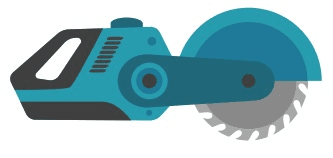The Top Reasons For Power Tools's Biggest “Myths” Concerning Power Tools May Actually Be Right
The Essential Guide to Power Tools: Unlocking Potential for DIY Projects
Power tools have actually reinvented the method both professionals and DIY enthusiasts approach tasks ranging from woodworking to metalworking and beyond. With a vast selection of choices available on the market, it's necessary to comprehend the different kinds of power tools, their applications, and how to utilize them securely and successfully. Powertool detailed guide will offer valuable insights into the world of power tools, assisting you select the right ones for your projects while making sure safety and performance.
Kinds Of Power Tools
Power tools can be broadly classified into 2 classifications: corded and cordless. Each category has its advantages and disadvantages, making them suitable for various applications. Below is an in-depth list of typical power tools you may consider.
Corded Power Tools
Corded tools are powered through an electric outlet, providing constant power without the need for battery management. Below are some common corded power tools:
Drills
- Application: Drilling holes and driving screws.
- Features: Typically have higher torque and continuous power.
Saws
- Types: Circular saw, jigsaw, band saw.
- Application: Cutting wood, metal, and other products.
- Features: Greater cutting power and accuracy.
Mills
- Application: Grinding, sharpening, and polishing.
- Functions: High RPM (transformations per minute) for efficient work.
Planers
- Application: Smoothing wood surface areas.
- Functions: Adjustable depth for different thicknesses.
Cordless Power Tools
Cordless tools operate on rechargeable batteries, providing benefit and portability. Here are several essential cordless tools:
Cordless Drills
- Application: Drilling and screwing without the trouble of cables.
- Functions: Lightweight and simple to maneuver.
Reciprocating Saws
- Application: Demolition and cutting in tight areas.
- Features: Versatile blade alternatives for numerous materials.
Effect Drivers
- Application: Fastening screws and nuts, providing high torque.
- Functions: Compact and developed for heavy-duty use.
Cordless Nailers
- Application: Driving nails rapidly without manual effort.
- Features: Ideal for framing, roof, and completing tasks.
Safety Tips for Using Power Tools
Using power tools includes fundamental dangers. It is essential to follow safety practices to reduce the chance of accidents. Here are some necessary safety ideas:
Wear Personal Protective Equipment (PPE):
- Safety glasses to safeguard eyes.
- Hearing defense when needed.
- Gloves suitable for the job at hand.
Read the Manual:
Familiarize yourself with the tool's functions, abilities, and restrictions.Examine Tools Regularly:
Check for any indications of wear or damage before use.Operate in a Clean Area:
Keep the work area arranged to avoid journey hazards.Use the Right Tool for the Job:
Ensure the tool is developed for your specific job to avoid misuse.Disconnect When Changing Accessories:
Always detach tools from source of power when altering bits or blades to avoid unintentional activation.
Best Practices for Maintaining Your Power Tools
Correct maintenance lengthens the life of power tools, ensuring they carry out efficiently when required. Below are some best practices:
Clean After Each Use:
Remove dust, particles, and any other pollutants.Store Properly:
Keep tools in a dry, protected area, ideally with protective sheathing.Check and Replace Batteries:
Regularly examine rechargeable batteries and replace them as needed.Sharpen Blades:
Keep cutting edges sharp for much better efficiency and safety.Set Up Professional Servicing:
Occasionally get your tools serviced by an expert, especially if they are used routinely.
Often Asked Questions (FAQs)
1. What are the main distinctions in between corded and cordless power tools?
Corded tools provide constant power and are normally more potent, making them perfect for sturdy tasks. Cordless tools, alternatively, provide greater mobility and convenience.
2. How do I pick the ideal power tool for my task?
Think about the type of work, needed power, and whether mobility is important. Reading reviews and getting recommendations can also assist ensure you pick the suitable tool.
3. How typically should I carry out maintenance on my power tools?
It depends upon usage frequency. For frequently utilized tools, a thorough cleansing and evaluation after every usage is a good idea. Less regularly used tools can be inspected and kept quarterly.
4. Are there battery types I should choose for cordless tools?
Lithium-ion batteries are usually preferred for their lighter weight and longer life compared to nickel-cadmium batteries.
5. Is it safe to use power tools in damp conditions?
No, operating power tools in wet conditions poses considerable threats of electric shock. Always ensure your office is dry.
Power tools have become indispensable in various applications, from enthusiast woodworking to professional building. Understanding the kinds of tools offered, adhering to safety procedures, and preserving them appropriately ensures that these tools can be used to their complete potential. As innovation advances, power tools continue to progress, making it vital for users to stay informed about the most recent developments and best practices. When utilized responsibly, power tools can transform any job into a work of art.
Table: Overview of Common Power Tools
Tool Type
Application
Source of power
Key Features
Corded Drill
Drilling/Screwing
Corded
Constant power, high torque
Circular Saw
Cutting
Corded
Precision cutting, numerous sizes
Cordless Drill
Drilling/Screwing
Cordless
Light-weight, portable
Reciprocating Saw
Demolition/Cutting
Cordless
Versatile for various materials
Effect Driver
Attaching
Cordless
High torque, compact design
Mill
Grinding/Sharpening
Corded
High RPM for effective work
Cordless Nailer
Driving Nails
Cordless
Quick attaching, no handbook effort
By empowering people with the knowledge of picking and responsibly using power tools, this guide looks to enhance productivity, safety, and overall fulfillment in DIY and professional jobs alike.
